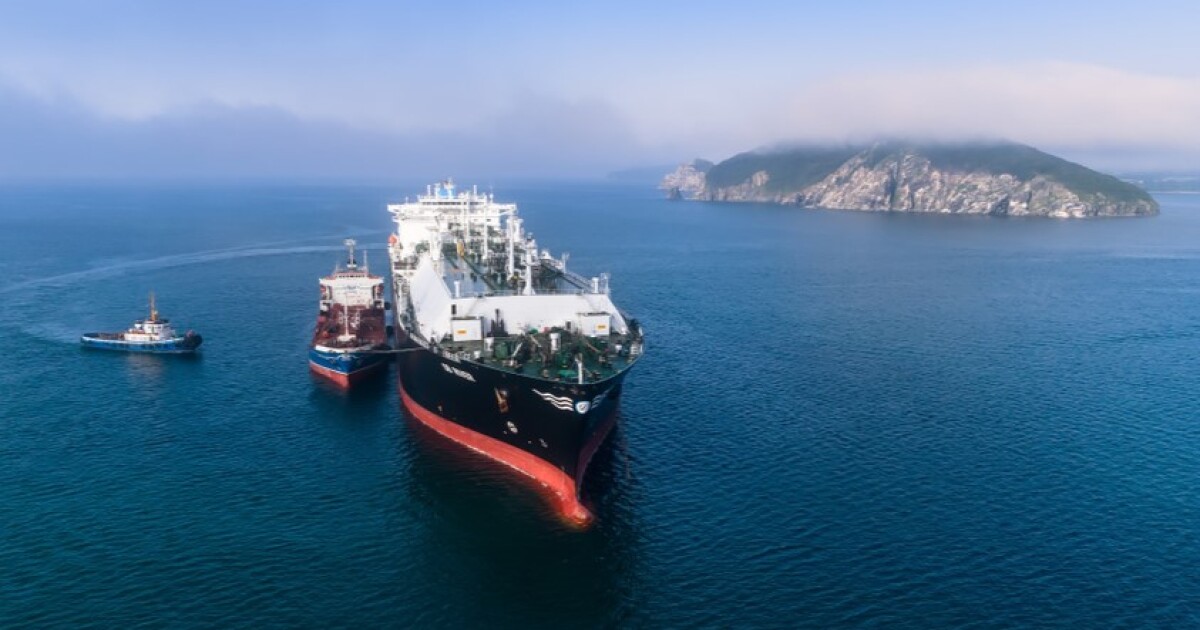Russia’s sanctioned Arctic LNG 2 plant on Thursday loaded this year’s fifth cargo, shortly after sending four tankers almost simultaneously to Asia in search of buyers, with another loading possible soon.
But key questions remain: Will buyers be tempted to buy sanctioned, but heavily discounted, Arctic LNG 2 volumes now on board six blacklisted tankers, and who are those potential customers?
Arctic LNG 2, controlled by LNG leader Novatek, is now understood to have just over 400,000 tons of LNG loaded on tankers that needs to be accommodated somewhere. Another 320,000 tons is in storage at the blacklisted Murmansk and Kamchatka transshipment terminals in northwest Russia and Russia’s Far East, respectively.
The conventional US-sanctioned Buran tanker on Thursday loaded Arctic LNG 2 volumes at the project’s home Utrenny export terminal on Gydan Peninsula, according to data from commodity analytics firm Kpler.
The vessel already had around 40,000 tons of Arctic LNG 2 molecules on board — roughly half of its tank capacity — loaded in June at Murmansk. At Utrenny, it filled its tanks by taking around as much LNG, according to Kpler.
Yet another loading is possible soon on board the ballast Arctic Metagaz tanker, which is now in the Kara Sea, potentially on route to Arctic LNG 2, having approached the Murmansk terminal without taking a cargo there, Kpler data shows.
The ramp-up in shipments from Arctic LNG 2 has prompted speculation about whether Asian buyers will risk taking blacklisted volumes — US sanctions targeting the project and its tanker fleet are understood to have kept the volumes off the market to date.
The timing coincides with last week’s US-Russia summit in Alaska — although there is no certainty that the restored dialogue between the two countries will lead to an easing of US sanctions on Russian LNG projects imposed by the former Biden administration.
Limited Operations Add Stress
The lifting of restrictions would be welcomed at Arctic LNG 2, which now has to run the recently launched second 6.6 million ton per year train at low-capacity rates due to its inability to market all of the volumes.
A source familiar with the technical side of LNG production in the Arctic told Energy Intelligence that the project needs to run its liquefaction trains periodically. But running them at limited capacity might cause problems in the long term.
“This adds unnecessary thermal stress to the cryogenic equipment and could lead in the long run to leaks, which are not easy to repair,” the source said, adding that this will impact the plant’s performance.
Volumes to Sell
With the latest Buran shipment, Arctic LNG 2 has loaded 13 cargoes since launching its first train in December 2023 — eight cargoes from August to mid-October 2024 and five cargoes since June this year.
Last year’s eight cargoes were unloaded at the Murmansk and Kamchatka terminals. However, Murmansk half-loaded Buran in June, and Kamchatka loaded the midscale Arctic Mulan tanker the same month.
Arctic Mulan departed Kamchatka on Aug. 15 after remaining there loaded since early June and sailed past Japan in the Pacific Ocean on Thursday.
As such, five Arctic LNG 2 tankers are now on route to unidentified destinations in Asia, with the newly loaded Buran likely to join them soon.
The Christophe de Margerie ice-class tanker has completed its journey along the Northern Sea Route to Asia after loading at the Arctic LNG 2 project last week. It was near Kamchatka in the Pacific Ocean on Thursday. The conventional tankers Iris, Voskhod and Zarya were also sailing east in the Arctic East Siberian Sea after loading cargoes in June and July.
Who Will Buy?
That is the big question.
The Kamchatka terminal is understood to be full, meaning it cannot accommodate the volumes from these tankers, which may be floating with their cargoes waiting for an opportunity to sell.
The Pearl tanker, carrying a cargo from Gazprom’s Portovaya LNG facility, blacklisted by the US since early this year, is now in a similar situation — it crossed the Malacca Strait last week and has since remained near Malaysia, likely awaiting a buyer.
US sanctions are understood to be effectively keeping buyers away from blacklisted Russian LNG volumes, even those that are heavily discounted, according to available ship-tracking data. However, some observers suggest that Arctic LNG 2 tankers may have secretly delivered some volumes to buyers, helping the blacklisted project finance current operations.
Is China Ready?
The world’s top LNG importer, China, which has expressed appetite for more Russian LNG amid the trade war with the US, has been just as reluctant as buyers from Asia-Pacific and elsewhere to purchase blacklisted volumes from its neighbor
It is unclear whether Beijing has changed its stance or found a way to mitigate secondary sanctions risks. But some blacklisted Arctic LNG 2 tankers have called at Chinese ports over the past year, although it is unclear if the cargoes were discharged.
The Sputnik Energy tanker has remained at the Dinghai shipyard on China’s Zhoushan Island. Before that, it spent several months in Russia’s Vladivostok port after unloading an Arctic LNG 2 cargo at the Kamchatka terminal in December 2024, according to Kpler data.
The Nova Energy tanker also arrived at a Chinese shipyard close to Dinghai in mid-July this year after unloading a cargo at Kamchatka in June, Kpler data shows.
And the East Energy was near Dinghai from late March through early August this year after offloading a shipment at Kamchatka in February. After departing China, East Energy spent around two weeks near South Korea and is now near Vladivostok, apparently moving further north, according to ship-tracking data.
